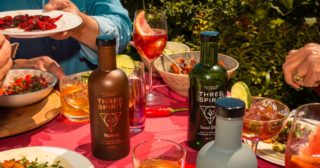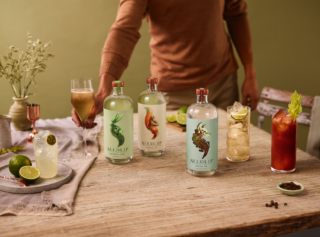It’s no secret there has been a decline in alcohol sales. The way people view alcohol alternative drinks is changing. We’ve heard about drinking less and drinking better—it’s starting to become a marketeer insight classic (but not quite to the level of ‘Millennials seek experiences’ just yet).

What is driving growth for alcohol alternative drinks?
In February we released a piece of research which posed a new thought. What increasingly drives consumer behaviour is control over mood, we call this ‘mood modulation’. Whether it’s experiences, prestige, health, altruism – whatever traditionally drives your customers, post-pandemic we’ve found it’s the psychology of mood which sits behind them all.
The world has become steadily obsessed with how we feel, and the drinks industry is not immune to the effects- alcoholic or not. There’s a desire for more control over how we feel. This is driving a more inward-looking view of food & drinks. It’s about how it makes us feel inside about ourselves.
Why does this matter for no-low brands?
By contrast, alcohol brand marketing has and continues to focus on extrinsic factors – like quality, status, success, experiences, and social connection. In other words, heavily influenced by how it makes you look and how other people see us. It’s what the brand badge says about you.
The products by default result in you feeling better, in the medium and long term. It leaves you hangover free, post-night out fear free and guilt free from the toxic effects of alcohol on your body. The benefit isn’t simply health. It’s the feeling you get from being healthy, and the feelings you avoid from drinking excessively.

How are brand comms positioning themselves around ‘mood modulation’?
Look at the original alcohol-alternative drink brand Seedlip, they experienced massive growth by mimicking the alcohol marketing conventions. After all, It’s the brand “you drink when you’re not drinking”. However, this ‘extrinsic’ brand lens might not be as enticing nowadays or strong enough against the newcomers in the category who actively promote not only ‘mood-modulating’ benefits but take it a step further with mood-boosting functions.

In short, what matters is less how you look, and more how you feel. Frame your research, strategies, segmentation, and messaging towards how people actually feel, not how they are trying to portray themselves. Position your brand as a way to help create or control a certain emotion. Because ultimately, what increasingly matters most is showing that your brand helps consumers control that ‘feel good’ feeling.
Want to find out more about mood modulation and what it means for the future of the drinks industry? Download our report.



